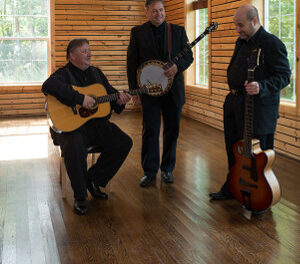The performance by the Dance Theatre of Harlem in Wilmington was sold out. Given the superb dance expected by an eager public, this was perhaps no surprise.
The Dance Theatre of Harlem, founded in 1969, spurred by the assassination of Martin Luther King, is celebrating its 50th anniversary this year. The top-flight corps of 17 dancers tours nationally and abroad. Their school in New York offers opportunities to students from young ages through serious aspiring dancers to develop “the means to change their futures by challenging themselves against the rigors of the classical art form of ballet.”
The company was founded by Arthur Mitchell (1934-2018), one of the leading dancers and choreographers of that time. It was dedicated both to the creation of an African-American troupe which would dance at the highest artistic level and to offering opportunities to youth in the Harlem neighborhood where Mitchell himself grew up. That dual mission remains today.
This idealism came together with the finest artistry at the 1,000-seat Kenan Auditorium, on the campus of the University of North Carolina Wilmington. It was one of ten events being given this season in the varied and colorful series UNCW Presents.
The program began with New Bach. Set to the music of one of Bach’s violin concertos, the first movement was danced with a combination of grace and muscularity. What struck the viewer here and throughout the performance, was the beauty of line held by each of the dancers. The group as a whole is highly coherent and expressive. In this first movement there were even touches of humor injected into Bach’s intricate contrapuntal language. Musical sections were set off by changing groupings of dancers, from one woman against four men, to the reverse, to larger numbers in shifting combinations.
In the second movement, danced in blue light, Bach’s gorgeously florid melodic writing was matched by elaborate florid movement from the dancers. The lively third movement – a gigue – was treated to shorter, smaller steps, with emphasis on footwork rather than body movement. The choreography was by Robert Garland, the resident choreographer of Dance Theatre of Harlem, who apprenticed under Mitchell. In this imaginative visioning of music 300 years old, and in the best tradition of creativity in movement, it lent an expanded vision to a great musical work and became a new vision of its own.
This Bitter Earth was an affecting pas de deux danced to aqua light in aqua costumes – perhaps suggesting the sea which is the origin of everything. Low strings started the work with a mournful tone, but gradually they rose to higher and more impassioned levels. They accompany the song “This Bitter Earth,” made famous by Dinah Washington, but it is, if anything, still more deeply expressive in Max Richter’s version heard here. The strings eventually weave around the voice as one comes to hope the dancers will interweave with each other. Danced by Yinet Fernandez and Da’Von Doane, emotional distance at the beginning melded into tentative connection at the end, the possibility, as suggested in the words, that love could prevail over the suffering that is and must be a part of things. By the repeating of the words of the first verse, and embodied by the perhaps fulfilled connection of the dancers, the listener/viewer is left with the heartfelt question: what could our world be without love in it?
The first intermission was followed by Change, a four-part progression through a range of experiences. The first extended section had only a bell for tone, while the three dancers – the work is a pas de trois – costumed in slightly ragged garments seemed to be constantly searching, their dance sliding into pantomime as nothing seems to be found. The world changes around them as an angelic female choir becomes the music; perhaps hope in the uncertain quest. The third part is energy and drama in movement and sound, with turmoil and surging drums or thunder, and – in an unusual feature of the choreography – ongoing shouts from the dancers. The feeling is savage, a world under siege. The final section returns to hope, with a spiritual in the music and more buoyant energy from the dancers. Calico in the costumes added color. Here, one of the three dancers did not have the complete physical stability of the other two, so that the unity otherwise so very present in the ensemble was less the case.
A program note says that the work was inspired by women, many unsung, striving to positively refashion the world around them. Warriors for change, it is suggested, a connection which came over clearly in Change. This is the goal too of the Spelman College Glee Club, which performed the spirituals heard with the dance. The leotards were patched together from tights “worn by former dancers with Dance Theatre of Harlem.” The dancers seen in Wilmington physically embodied the legacy of the women who came before them.
The second intermission led to the delightful concluding Harlem on My Mind. This charged-up piece is an homage to the music of Harlem. Three of the five tunes were performed by Count Basie and his orchestra, terrific songs led by a musician who played in Harlem in its great heyday of the 1920s. Here, on a brightly lit stage, the dance was stylish and energized, symbiotically embodying the music. There was visual variety in the juxtaposing of individuals and the larger group. In spite of the energy, an exciting lightness prevailed in the dance movements. The exception was in “My Funny Valentine.” In this very reflective interlude, one wished for gentler and slower movement from the solo dancer. In the ending number – played by the electric Wynton Marsalis and his orchestra – the entire company onstage was sheer energy, an incandescent denouement.
The world-class Dance Theatre of Harlem gave their audience all the artistry, beauty, and excitement they could possibly have hoped for.











